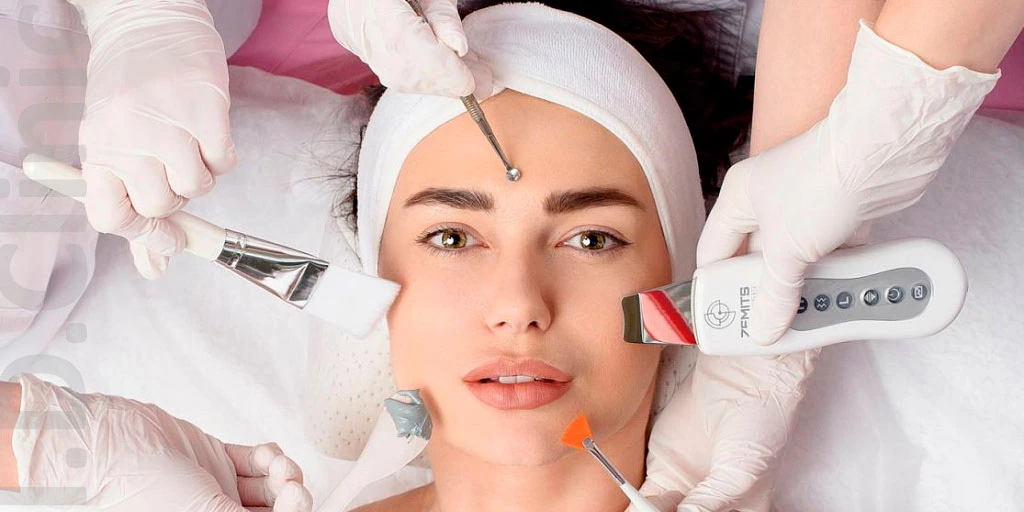
Facial cleansing

Some patients find such questions annoying, but they are important, and I will explain why!
To perform the procedure properly, time is needed. Each type of facial cleansing is a different technique, meaning the time required varies.
The specific facial cleansing method a patient needs, as well as the frequency and number of procedures, is determined individually by the doctor. Let’s look at the types, indications, contraindications, and special recommendations from the doctor at I.D.Clinic.
Facial cleansing is a cosmetic skincare procedure aimed at cleansing the surface of the epidermis and pores from dead skin cells, open and closed comedones, milia, and excess sebum.
Types of Facial Cleansing:
- Atraumatic – suitable for all skin types, helps make the skin silky, soft, and clean, with no recovery period or redness. It is performed using special products designed for cleansing, moisturizing, nourishing, and restoring the skin.
- Ultrasonic – a hardware procedure that is non-traumatic and completely painless. It is performed using a special ultrasonic scrubber. During the procedure, ultrasound cleanses the skin of blockages and comedones, removing dead skin cells and sebum.
- Mechanical – performed manually (by hand) and with special tools, allowing for deeper cleansing of the skin from excess dead cells, sebum, open and closed comedones, and milia.
- Combined – includes several skin treatment methods for the best results, usually a combination of manual and ultrasonic cleansing. This method takes into account all skin features, deeply cleansing certain areas while gently treating others.
When Facial Cleansing is Needed:
- Oily or combination skin type
- Open comedones
- Closed comedones
- Sebaceous plugs
- Milia
- Enlarged pores
- Hyperkeratosis (excessive skin thickening)
- Prevention of inflammatory elements (papules, pustules)
- To reduce “purging” (a temporary skin reaction to active ingredients that manifests as an increase in breakouts) before starting topical or systemic acne treatment, or before introducing actives into a skincare routine
Contraindications:
- Acute respiratory infections (fever, runny nose, cough, sore throat)
- Active herpesvirus infection
- Skin integrity disorders (cuts and wounds) in the treatment area, recent tanning
- Severe forms of acne (Stage III-IV)
- Chronic skin diseases in the acute stage
- High blood pressure, blood disorders, use of anticoagulants
- Tendency to keloid scar formation
- Decompensated diabetes
- Oncology of any type
Our Recommendations After the Procedure:
- Avoid touching the face with hands
- Do not use decorative cosmetics on the same day
- Change pillowcases to clean ones
- Sanitize your phone with an antiseptic
- Avoid saunas, pools, or gyms for 2-3 days
- Do not use active ingredients like retinol or acids for 3-4 days
- Avoid other cosmetic procedures for 7 days
- Do not expose your skin to direct sunlight
- Always use sunscreen
- If peeling occurs (a normal skin reaction), do not pick at scabs, as this may lead to scars or pigmentation; instead, use moisturizing products
- If new breakouts appear, do not squeeze them to prevent infection spread; use an SOS treatment instead
- Avoid facial scrubs with abrasive particles
- Use a skincare routine recommended by your cosmetologist
The team of professionals at I.D.Clinic wishes you health and beauty.
